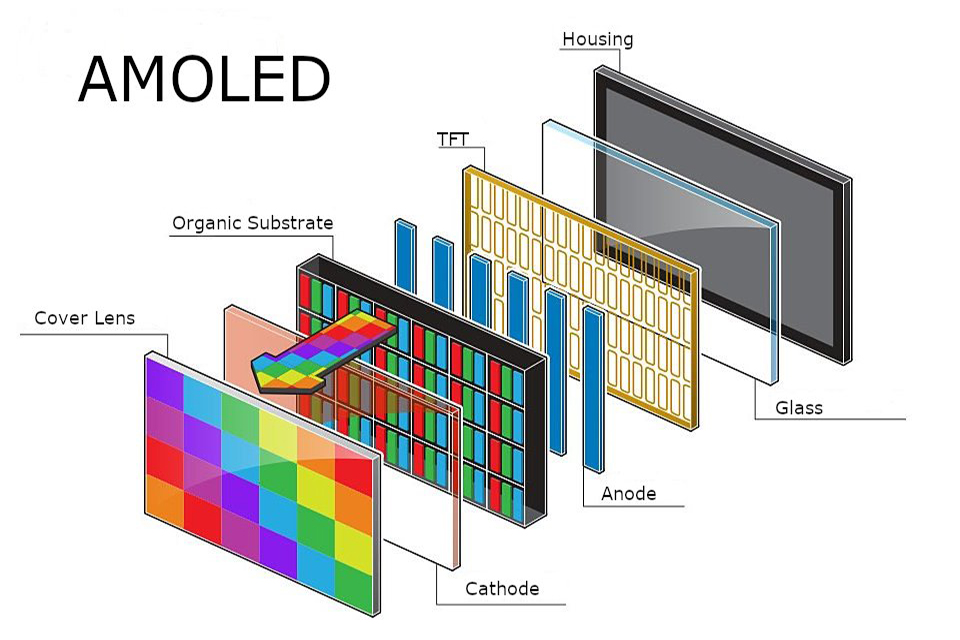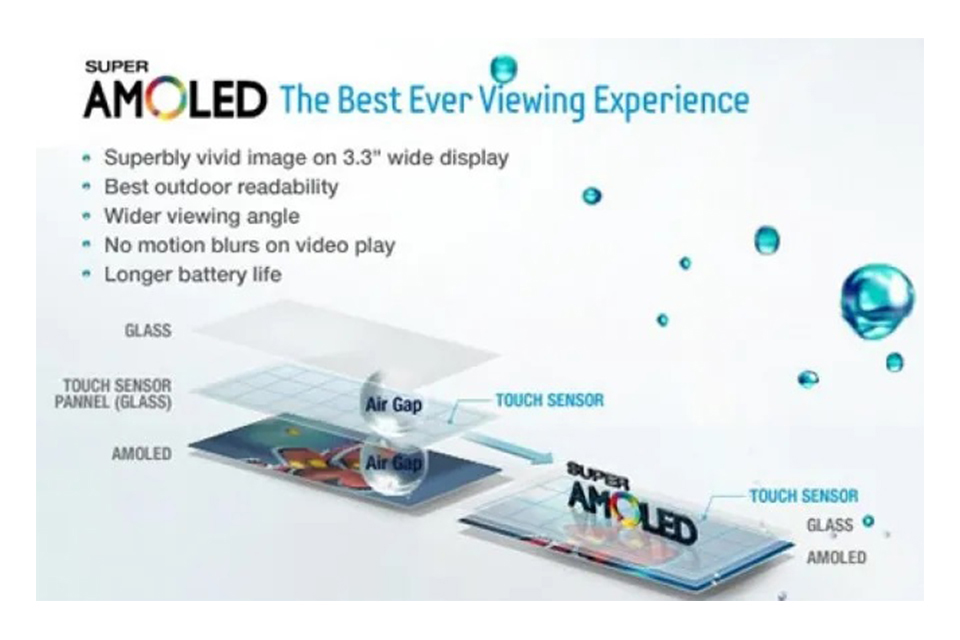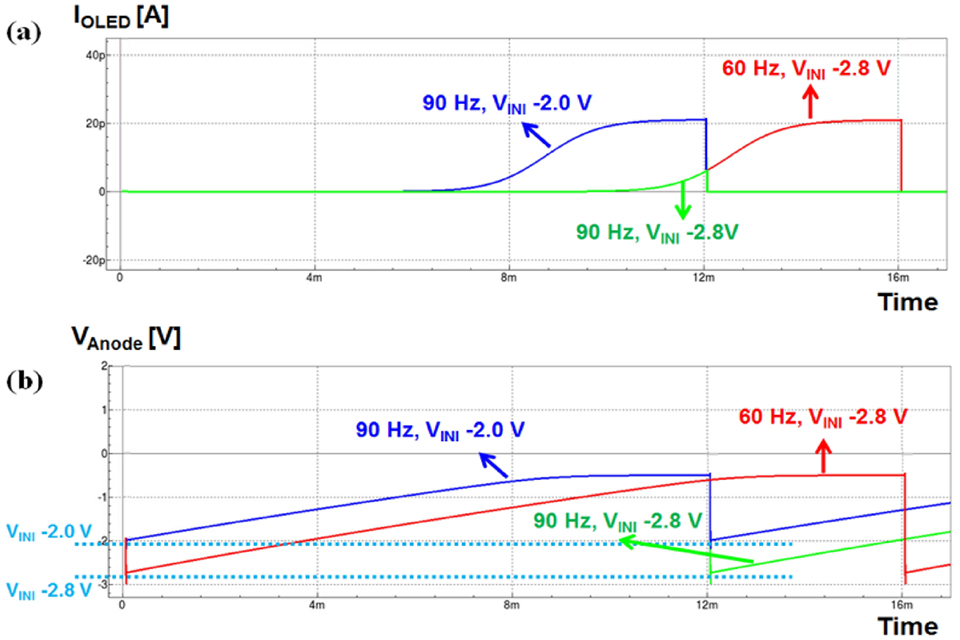An AMOLED display combines advanced technology with visual brilliance. It stands for Active-Matrix Organic Light-Emitting Diode. Unlike traditional screens, an AMOLED display allows each pixel to emit its own light, resulting in vivid colors and true blacks. This technology is widely used in high-end devices, making it a popular choice among consumers seeking superior visual experiences.
The ability of AMOLED displays to produce striking images makes them ideal for everything from gaming to watching movies. Understanding the fundamentals of AMOLED technology is crucial for anyone looking to invest in new devices or simply wanting to learn more about display technologies.

AMOLED displays work through a unique structure consisting of several layers. These include a substrate, organic layers, and an active matrix made up of thin-film transistors (TFTs). When an electric current is applied to the organic layers, they emit light, allowing each pixel to create its own colors.
This active matrix system is what distinguishes AMOLED from other types of displays. In passive matrix displays, pixel control is less efficient, leading to slower response times and lower quality images. By using an active matrix, AMOLED displays provide faster refresh rates and better performance during fast-moving scenes, enhancing the overall viewing experience.
To understand the difference between AMOLED and OLED, it’s essential to know that all AMOLED displays are a type of OLED. The key distinction lies in how they control the pixels.
This results in better color accuracy, brightness, and faster response times with AMOLED technology. Knowing this difference helps consumers choose the right display for their needs.
AMOLED displays offer several compelling benefits that enhance the user experience:
Vivid Colors: AMOLED screens can produce a broader spectrum of colors, making images appear more lifelike and vibrant. This is particularly beneficial for media consumption, such as movies and games.
True Blacks: One of the standout features of AMOLED technology is its ability to turn off individual pixels completely. This results in true blacks, enhancing contrast ratios significantly and making images pop.
Energy Efficiency: AMOLED displays can consume less power, especially when displaying darker images. Since black pixels do not consume energy, this can lead to longer battery life in devices.
Thin and Flexible Design: The construction of AMOLED technology allows for thinner screens, and even flexible displays, making them suitable for modern devices.
These benefits make AMOLED displays a popular choice for users who prioritize visual quality and energy efficiency.

When comparing AMOLED and LCD (Liquid Crystal Display) technologies, several important differences arise:
Light Emission: AMOLED displays emit their own light, while LCDs rely on a backlight. This results in brighter images and deeper blacks for AMOLED, whereas LCDs can appear washed out in comparison.
Black Levels: The ability of AMOLED displays to turn off individual pixels allows them to achieve true blacks, while LCDs struggle to reach similar black levels due to their backlighting.
Power Consumption: AMOLED displays are generally more energy-efficient when displaying darker images, while LCDs consume the same amount of power regardless of the content.
These distinctions explain why many consumers prefer AMOLED displays for applications requiring superior color quality and contrast.

The refresh rate of a display indicates how many times per second the image is updated. AMOLED displays typically feature refresh rates of 60Hz to 120Hz or more, which allows for smoother motion and enhances the viewing experience, particularly in fast-paced video games and action films.
A higher refresh rate reduces motion blur and improves clarity during rapid scene changes, making AMOLED displays the preferred choice for users who value performance in their visual experiences.
Despite their many advantages, AMOLED displays also have some drawbacks:
Burn-In Issues: One significant concern with AMOLED technology is burn-in. This occurs when static images are displayed for too long, leaving a permanent ghost image on the screen.
Higher Cost: The production of AMOLED displays can be more expensive than that of traditional LCDs, potentially leading to higher prices for devices that feature this technology.
Limited Lifespan: The organic materials used in AMOLED displays can degrade over time, which may result in reduced brightness and color accuracy.
These challenges are essential for consumers to consider when evaluating devices with AMOLED technology.
Super AMOLED is an advanced version of AMOLED technology developed by Samsung. The main difference between Super AMOLED and standard AMOLED is the integration of touch sensors directly into the display. This eliminates the need for a separate touch layer, resulting in a thinner, lighter design with improved touch sensitivity.
Additionally, Super AMOLED displays often provide better visibility in bright sunlight and enhanced color reproduction. Many flagship devices from Samsung utilize Super AMOLED technology, reinforcing the positive reputation of AMOLED displays for quality and performance.
The future of AMOLED technology appears bright as manufacturers continue to innovate. With advancements in materials and display technologies, we can expect improvements in durability, energy efficiency, and production costs. Emerging trends, such as foldable displays and higher-resolution screens, are likely to drive further development in AMOLED technology.
Moreover, ongoing research aims to address issues like burn-in and lifespan, which will enhance the overall user experience. As technology evolves, AMOLED displays are set to remain a key player in the visual technology landscape.
When selecting a device with a display, it’s crucial to consider your specific needs and preferences. If you value vibrant colors and deep blacks for media consumption, an AMOLED display may be the best choice for you. On the other hand, if you primarily use your device for tasks that require bright visuals in various lighting conditions, an LCD might be more suitable.
Think about the intended use of your device. For gamers, a higher refresh rate on an AMOLED screen could provide a significant advantage, while casual users might find standard features sufficient. Ultimately, your choice should match how you plan to use your device.

Understanding what an AMOLED display can offer empowers consumers to make informed decisions when choosing devices. As technology continues to advance, AMOLED displays will likely play a central role in enhancing our visual experiences.
Contact: David
Phone: +8618665976986
Tel: +8675521563288
Email: [email protected]
Add: 305 Room A Buiding Huafeng International Robot Industrial Park Xixiang Bao'an